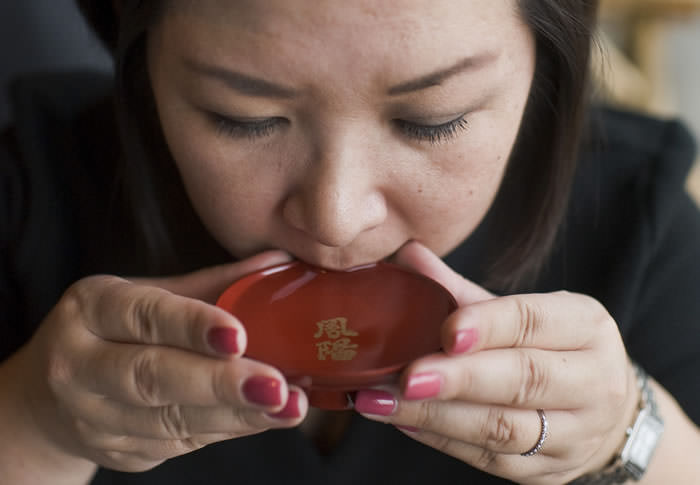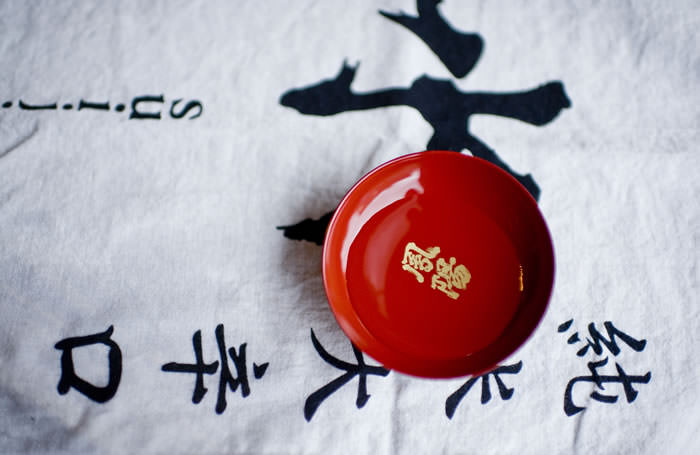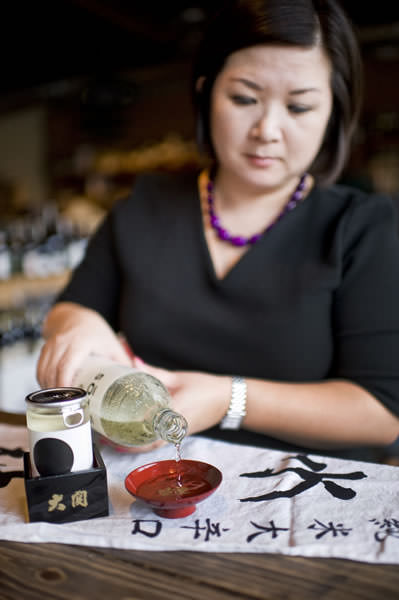edible uncorked
SAKE TO ME
Let rice wine reign this season.
WRITTEN BY ERIN MEYERING
PHOTOS BY CANDICE NYANDO

Bright and lively with crisp, tropical notes. Creamy and chewy on the palate. Fresh and smooth with subtle notes of pear. Who knew these phrases might describe sake, that ubiquitous, strong drink served warm alongside Japanese food?
As we wind down Japanese (and American) New Year celebrations, why not embrace the unfamiliar and expand our horizons — especially when it comes to our celebratory beverage?
“Adventurous folks who bore easily over mundane grocery store stacks should seek sake to enrich the body and soul,” says Troy Phillips, sake lover and owner of Battle Born Wine in Gardnerville.
Fermenting flavor
Sake often is called rice wine, and like wine, the flavor of sake comes from its fermentation process. However, sake comes from a fermented grain (rice), not a fruit, and therefore is similar to beer. Its lightness and fruitiness depend on the addition (or not) of distilled alcohol and whether the rice is highly milled (and free of impurities). But unlike beer, in which the conversions from starch to sugar and sugar to alcohol occur in two separate steps, when sake is brewed, the conversions happen simultaneously. On average, sake contains 15 percent alcohol by volume.
Breakthru Beverage business development manager Aya Nomoto is no stranger to sake. She’s worked for more than 20 years in the restaurant and hospitality business and is an advanced sake specialist with the Sake Education Council. She helps Ty Martin, owner of Craft Beer & Wine in Reno, select sake for the shop, and she occasionally teaches classes there.
Nomoto suggests beginners look for gin on the label. Sakes labeled ginjo or daiginjo have a more delicate flavor class, meaning the sake will be lighter, fruitier, and simply easier to sip.

Past and present
Although the typical shelf life for sake is relatively brief — only six months to a year — the drink itself has a long, rich history. According to Japan’s first written history, which was compiled in 712 AD, sake originated in the Nara period (710 to 794 AD).
Now sake is consumed as part of celebrations for several Asian holidays and is offered in nearly every sushi restaurant. Although not a novelty, sake is gaining popularity as people realize it can have a complex flavor profile and can be enjoyed with more than just fish.
“January and February are great months for enjoying sake because fresh-brewing-year sakes are coming out in Japan,” Nomoto says.
Although sake now is brewed year round thanks to new methods that enable rice farming indoors, there still is a seasonality associated with drinking it. New, fresh sake is released in late winter and early spring.
Traditionally, sake is consumed warm, which may be preferable during the winter months. However, it’s now common to drink it slightly chilled. The determination can be made based on preference and whether it’s being consumed alongside food.
Martin encourages people to try several types of sake to compare their flavors. He says that Craft carries about 20 different ones. His current favorite? Narutotai Ginjo Nama Genshu.
“As a nama, it is unpasteurized and offers a full and rich body with some melon, umami, and a little yeasty spice,” Martin says. “It goes great with Manchego cheese and fatty fish.”
Erin Meyering believes sake is best served warm from a delicate porcelain cup. She’s looking forward to sampling different types and may be stocking up for future at-home sushi dinners.
Resources
Sip local
Buy sake from these local vendors.
Battle Born Wine
1448 U.S. Hwy. 395, Gardnerville • 775-782-7684 • www.Battlebornwine.com
Craft Wine & Beer
22 Martin St., Reno • 775-622-4333 • www.Craftreno.net
Note: Store your sake below room temperature or in the refrigerator. Once opened, it should be consumed within several days.
Pairing sake
When selecting sake to pair with food, look for similar textures or flavor profiles.
Breakthru Beverage business development manager Aya Nomoto suggests pairing a rich, dry sake with a savory umami dish such as grilled meat or a dish with miso, soy, or mushrooms. (Try Nihon Sakari Oni Koroshi or One Cup Ozeki.)
In contrast, you should pair a clean, smooth sake with a lighter dish such as ceviche. (Try ENTER.Sake Black.)
Also consider the aromatic quality of the sake. According to Nomoto, lighter sake tends to have less acidity but more of an aroma. For this reason, use a lighter sake with dishes with acidity (citrus or vinegar accent), or creamy-textured shellfish, shrimps, or scallops. (Try Soto Sake Junmai Daiginjo Sake.)
Nomoto says to avoid strongly aromatic sake with delicate dishes. Instead, such a sake is great with dishes featuring cream or cheese.
Sake with some aromatics goes well with green vegetables such as asparagus, spinach, or Brussels sprouts. (Try Kikusui Junmai Ginjo Sake.)
All sakes listed are available at Craft Beer & Wine. For more details on pairing sake, visit Sake-world.com.
WRITTEN BY BARBARA TWITCHELL
PHOTOS BY JAMIE KINGHAM, JEN BRITTON, AND COURTESY OF CHAD AND ELYSA KLEIDOSTY


